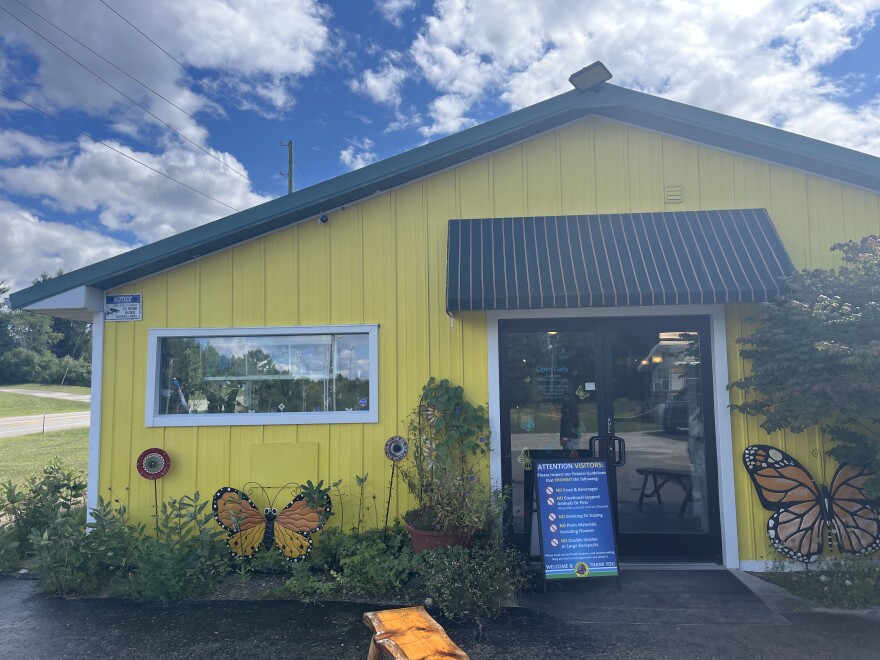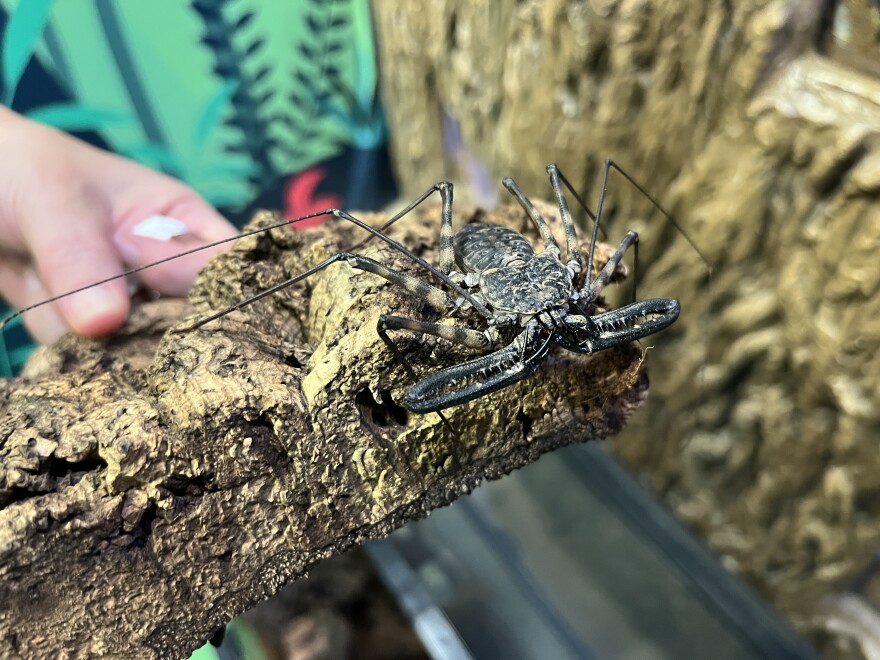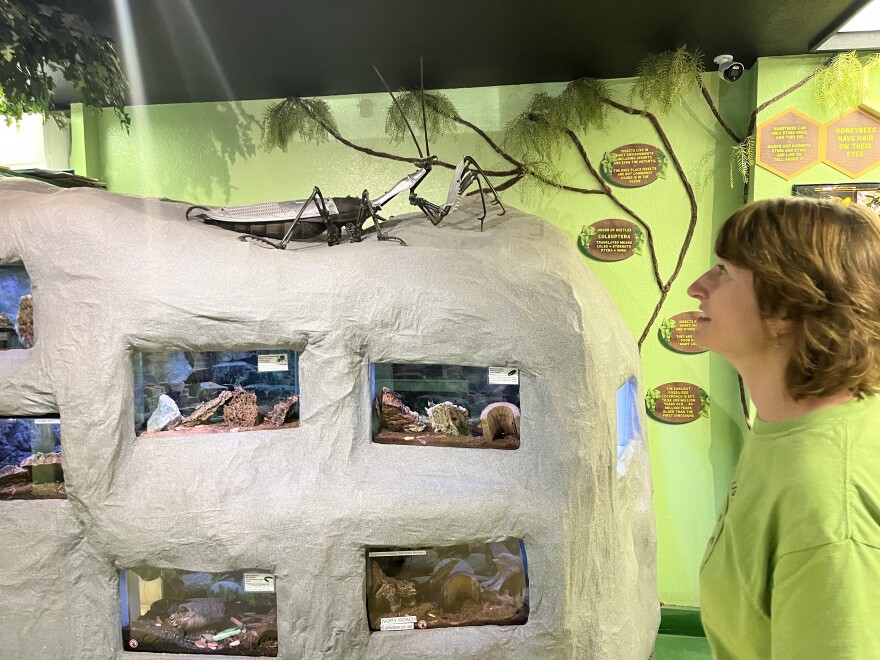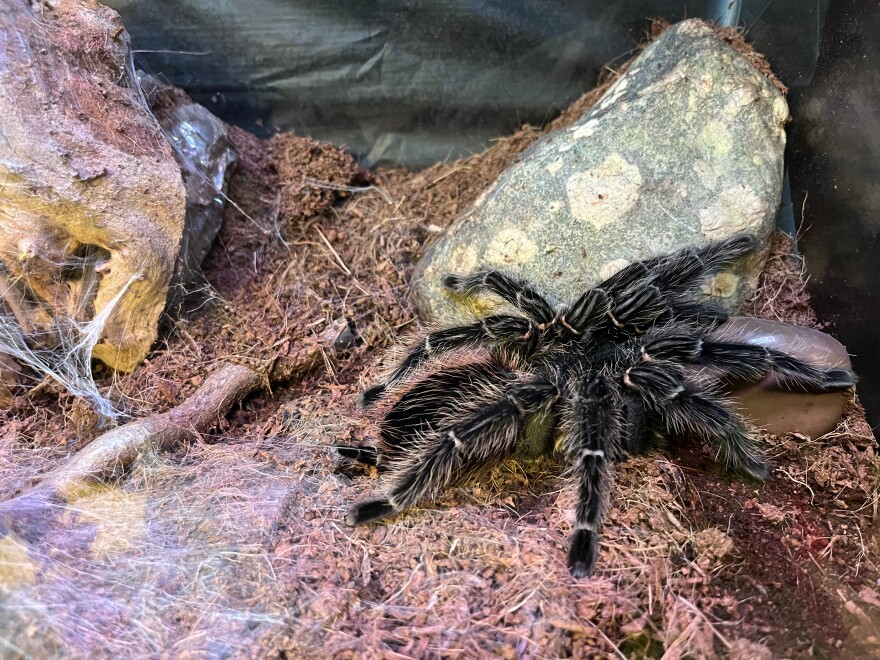Cindy Roach — curator of the Grand Traverse Butterfly House and Bug Zoo — believes now is more important than ever to face your fear of bugs. Since the 1980s, bug populations have declined by 45% due to pesticides and climate change.
Considering that 90% of all animals are bugs, this is even more alarming. Roach founded the zoo to spark curiosity for earth’s least charismatic creatures. The way she sees it, if you’re afraid of something, you’re not going to want to conserve it.

The zoo is located 20 minutes east of Traverse City along highway 72, in a yellow building surrounded by a native pollinator garden. Inside it is humid, and fans hum in the background. A transparent vinyl curtain separates the main building, which is full of tanks, from the butterfly house, a big greenhouse.
In one corner of the butterfly house a mom and her two sons listen as a docent describes the Atlas Moth in front of them. The Atlas Moth is enormous, the size of a large, outstretched palm.
“She doesn't have a mouth. She can't eat or drink anything,” the docent said. “So, she can't replace the energy that she uses.”
These moths evolved to have big bodies because they emerge from their cocoons with all the energy they will ever have in their one or two-week lifespan.
For a lot of bug-lovers, an Atlas Moth is the first kind of bug to peak their interest. That was the case for Seneca VanderWall, another zoo employee. VanderWall is tall and wears a hoodie even inside the humid butterfly house.

When the zoo hired her, she was still afraid of spiders. But during her first week a coworker put a Tasmanian Whip Spider in her hand. Tasmanian Whip Spiders have massive, lean bodies with matching legs. At first glance, they could be mistaken for a toad, not a bug.
The spider crawled up her arm towards her face, VanderWall said. “I was like, well, nothing could be scarier than this,” she added.
All it took was one exposure to dispel her fear. Now, she has two pet spiders at home. She picks spiders up on walks. And when she finds one in her house, she puts it in her kitchen so it can eat the fruit flies.
Roach, the museum curator, and her employees each have up-close-and-personal relationships with bugs. They all insist bugs have personalities including their “prissy” mantis named Big Mamma who always eats her prey legs-first, “almost like chicken wings.”
Roach encourages her employees to anthropomorphize bugs to help visitors develop empathy for them. This runs counter to her training in zoology, which taught her that it is unscientific to assign animals human traits. But she’s come around to the idea that finding humanity in non-human creatures is crucial for conservation. Besides, she loves the bugs she tends to.
Once, when she first started the bug zoo, she nursed a poisonous, foot-long centipede as it died. The centipede was trying to get bigger by shedding its skin, but the conditions in its tank were too dry, and it became entangled in its own molt. For many hours she sat with it, trying to moisten it.

“It was agonizing. Because I really wanted this animal to live,” she said. Roach took this death personally. She couldn’t be totally sure, but she blamed herself for not providing the right conditions. “I had possibly failed,” she said, tearing up.
If a pet dog or cat dies, people console you. But when Roach’s centipede died, it was difficult for anyone to understand her loss. “They were like, what are you talking about? It’s a stupid bug. Move on.”
And this is the true magic of the zoo. As much as it caters to visitors who fear and even revile bugs, it doubles as a hub for people who already care, and are able to connect over their shared fascination.
This story was produced as part of the Transom Story Workshop hosted by Interlochen Public Radio in August of 2025.


